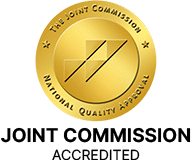You’ve been working on your healing journey, attending trauma therapy sessions, and practicing self-care, but how do you know if it’s actually working?
Many trauma survivors wonder if their body is truly beginning to release stored trauma from past traumatic experiences. The truth is, your nervous system has its own unique way of signaling that healing is happening.
Understanding these signs can bring hope to your trauma recovery process. They’ll help you recognize that your therapeutic approaches are making a real difference. Sure, it doesn’t always feel comfortable, but you’ll be moving toward greater well-being and a renewed sense of safety.
Table of Contents
- 1 A Quick Overview: What Counts as Trauma?
- 2 11 Signs Your Healing Journey Is Helping Release Trauma
- 2.1 1. Your Sleep Patterns Are Changing
- 2.2 2. Muscle Tension Is Releasing
- 2.3 3. Your Emotional Responses Are Shifting
- 2.4 4. Your Breathing Patterns Have Transformed
- 2.5 5. You’re Experiencing Increased Body Awareness
- 2.6 6. Your Digestive System Is Settling
- 2.7 7. You Feel Safer in Relationships
- 2.8 8. Physical Sensations Don’t Overwhelm You
- 2.9 9. Your Energy Levels Are Stabilizing
- 2.10 10. You’re Less Reactive to Triggers
- 2.11 11. You Experience Moments of Genuine Peace
- 3 To Wrap Up
A Quick Overview: What Counts as Trauma?
Trauma isn’t always what you might expect. It’s not just major life-altering events, though those certainly count.
Trauma happens when your nervous system becomes overwhelmed by an experience that feels too intense to process in the moment. Your body stores these overwhelming experiences as unresolved trauma.
This affects your physical health, mental health, and overall sense of safety in daily life.

Acute Trauma
Acute trauma comes from a single traumatic event. Think of car accidents, natural disasters, or violent crimes.
Your body’s fight or flight response kicks in, but sometimes the experience is too much to handle all at once. The traumatic memories can get stuck in your system.
Complex Trauma
Complex trauma develops from repeated traumatic experiences over time. Often starting in childhood, it includes ongoing abuse, neglect, or living in chronic fear.
Your nervous system learns to stay on high alert. As a result, this type of trauma affects how you relate to others and move through the world.
Developmental Trauma
Developmental trauma during crucial developmental years. It can disrupt your sense of safety and attachment. Even seemingly small events can create lasting impacts when they occur during vulnerable periods of growth.
Secondary Trauma
You can develop trauma symptoms from witnessing someone else’s pain. Healthcare workers, first responders, and even loved ones of trauma survivors can experience this. Your body doesn’t always distinguish between direct and indirect exposure.
11 Signs Your Healing Journey Is Helping Release Trauma
Your body has its own wisdom when it comes to healing. As you progress through trauma therapy, somatic experiencing, or other therapeutic approaches, your nervous system begins to shift.
Like we mentioned, these changes aren’t always comfortable. Instead, you should view them as powerful indicators that your healing process is working.
1. Your Sleep Patterns Are Changing
One of the first signs your body releases trauma is through shifts in how you sleep.
You might notice your sleep patterns becoming more regular after months of insomnia or restless nights. Dreams may become more vivid as your mind processes traumatic memories safely.
Sometimes the opposite happens initially. You might experience temporary sleep disruptions as your nervous system recalibrates. This is normal during trauma release. Your body is working through stored trauma even while you rest.
Finally, many trauma survivors find that nightmares decrease over time.
2. Muscle Tension Is Releasing
Your body holds onto traumatic experiences through muscle tension, especially in your neck, shoulders, and back. When trauma release begins, you’ll notice those areas starting to soften and relax.
You might experience muscle twitching, shaking, or trembling during somatic therapy sessions. This isn’t something to fear. It’s your body’s way of discharging stored energy from past trauma.
These physical sensations are signs that your nervous system is finding its natural rhythm again. Chronic pain that seemed unrelated to any physical injury might begin to fade. Tension headaches become less frequent. Your body feels more flexible and open.
This muscle relaxation is a beautiful sign that your therapeutic approaches are helping your body let go of what it’s been holding.
3. Your Emotional Responses Are Shifting
Emotional releases are a significant part of trauma recovery. You might find yourself crying more easily, not necessarily from sadness, but as a way of releasing pent-up emotions. These tears are healing tears.
Your emotional responses become more proportionate to current situations rather than being hijacked by past trauma. You feel emotions more fully, but they don’t overwhelm you the same way. There’s a flow to your feelings that wasn’t there before.
Sometimes you’ll experience waves of emotion that seem to come from nowhere. This is your body processing and integrating traumatic experiences. Trust this process.
4. Your Breathing Patterns Have Transformed
Trauma often lives in shallow, restricted breathing patterns. As your body releases stored trauma, you’ll notice your breathing becoming deeper and more natural. Deep breathing happens automatically, not just during breathwork sessions.
You might catch yourself taking spontaneous deep breaths throughout the day. Your body is learning to trust that it’s safe to breathe fully again. This shift in breathing patterns signals that your fight or flight response is calming down.
Physical symptoms, such as chest tightness or feeling like you can’t catch your breath, begin to fade. Your heart rate becomes more stable as well.
5. You’re Experiencing Increased Body Awareness
Your relationship with your body is transforming. You’re becoming more aware of physical sensations without feeling overwhelmed by them. This heightened body awareness is a sign that you’re developing a healthier connection with yourself.
For instance, you notice when your body feels tense and can respond with self-compassion rather than judgment. Additionally, physical signs of stress become easier to recognize early.
This way, you’re able to practice self-care before you become overwhelmed. This growing awareness extends to understanding your body’s needs. You recognize when you need rest, movement, or nourishment.
6. Your Digestive System Is Settling
Fun fact: your gut and nervous system are deeply connected. When trauma release begins, digestive issues that seemed mysterious start to improve. That constant stomach tension eases, and those inexplicable feelings of nausea become less frequent.
You also become hungry at regular times. Food tastes better. Your stomach doesn’t clench with anxiety every time you eat. These changes happen because your body is shifting out of survival mode.
7. You Feel Safer in Relationships
Trauma affects how you connect with others. When your body releases stored trauma, you’ll notice shifts in how you relate to your loved ones. That constant hypervigilance around people starts to soften. You can be present without scanning for danger.
Trust becomes easier, though it might feel scary at first. You find yourself opening up more naturally in conversations. The walls you built for protection don’t feel as necessary anymore.
Note: This doesn’t mean you become naive—you develop healthy boundaries instead of walls.
Plus, your nervous system learns to distinguish between actual threats and old triggers. Being around people feels less exhausting, too.
8. Physical Sensations Don’t Overwhelm You
In the past, certain physical sensations might have triggered flashbacks or panic responses.
Now you notice these same sensations without being hijacked by them. Your body’s way of processing becomes more balanced and manageable.
Temperature changes, loud noises, or unexpected touch don’t send you into fight or flight mode as quickly. When you do feel triggered, you recover faster. After all, your nervous system is learning to regulate itself more effectively.
9. Your Energy Levels Are Stabilizing
Did you know that trauma takes enormous energy to maintain? As your body releases this stored tension, you might notice your energy patterns changing. Chronic fatigue that seemed to have no medical cause begins to lift gradually.
For example, you have more consistent energy throughout the day rather than extreme highs and crashes. Sleep becomes more restorative as well, so you wake up actually feeling rested.
Heads up: this isn’t immediate. Healing takes time. Sometimes there’d be periods of increased fatigue as your system integrates the healing work. This is also normal and temporary.
10. You’re Less Reactive to Triggers
Old triggers still exist, sure, but your response to them is changing. Instead of being completely overwhelmed, you notice the trigger and can choose how to respond. You learn to pause between stimulus and response.
In other words, certain sounds, smells, or situations that once sent you spiraling now create a brief moment of alertness that passes more quickly. Your nervous system is finally learning to distinguish between past and present more effectively.
Further, when you do get triggered, you have the tools and awareness to help yourself.
11. You Experience Moments of Genuine Peace
Perhaps the most beautiful sign of trauma release is the return of moments when you feel genuinely at peace in your body. These might be brief at first: seconds or minutes of feeling completely okay just as you are.
How to recognize this? Easy. You may smile spontaneously. Laughter comes more easily. There’d be moments when you’re not thinking about trauma at all; you’re simply present and content.
To Wrap Up
The 11 signs we talked about today show that your healing journey is working, even when progress feels slow. Just remember that trauma recovery isn’t linear—some days will feel easier than others.
Our last piece of advice? Trust your body’s natural ability to heal with the right professional support and self-compassion. Your nervous system is remembering how to feel safe, and that’s something truly worth celebrating.
Published on: 2025-06-30
Updated on: 2025-06-30



